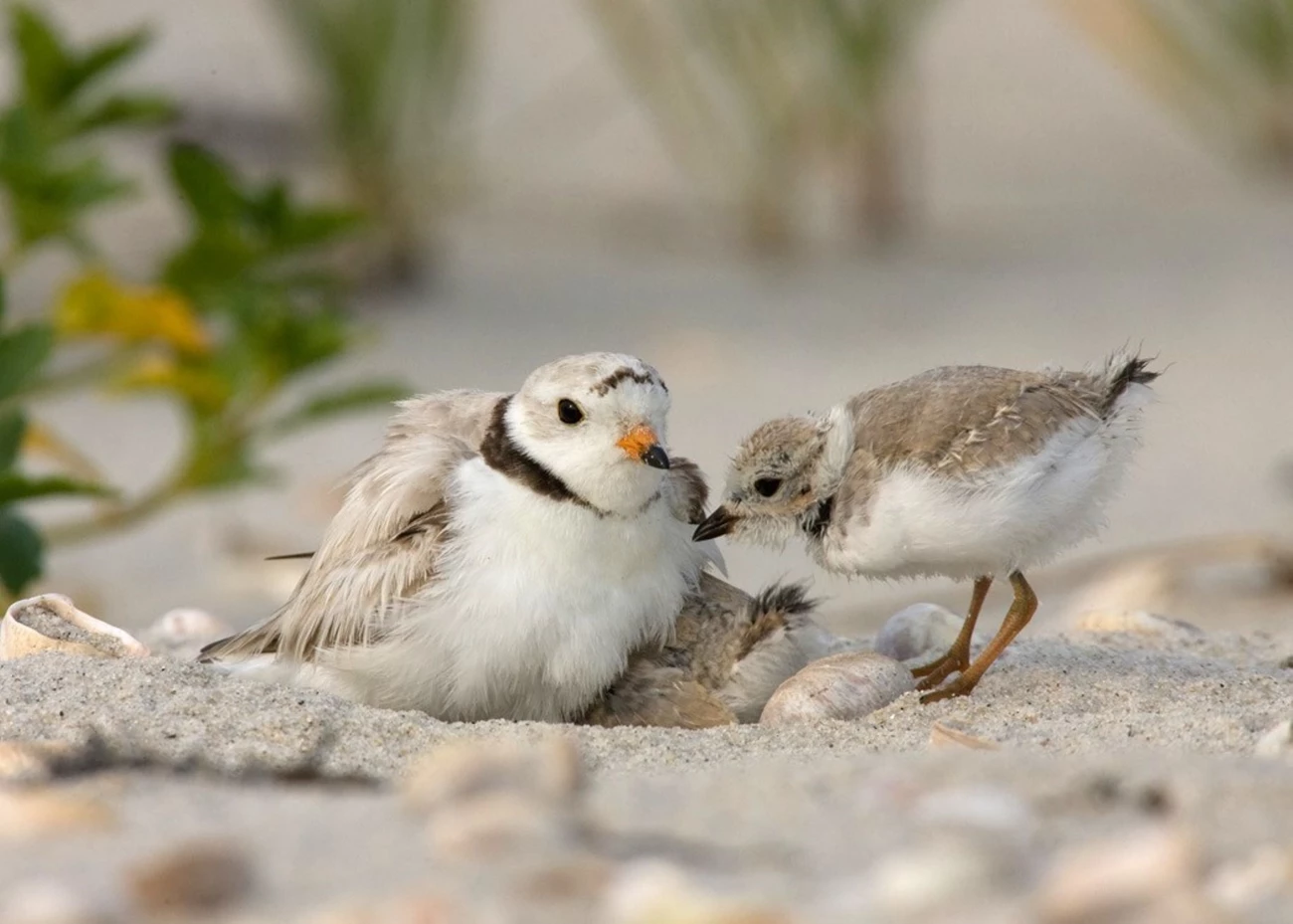
NPS Image Wildlife MonitoringCape Cod National Seashore is home to lots of wildlife, including amphibians, birds, mammals, and reptiles. Wildlife monitoring and research, such as with coyotes and shorebirds, allows park staff to understand their populations and make informed management decisions. Many wildlife species also serve as indicator species – species that can signal changes or trouble (or vice versa good health) in an ecosystem by their presence and population status – allowing park scientists to understand important things about both individual species and larger systems.ShorebirdsThe beaches of Cape Cod are home to several species of nesting shorebirds, which play important roles in maintaining healthy coastal ecosystems. They are indicator species – meaning declines in their population indicate that the ecosystem is in trouble – and by controlling prey that feed on native grasses as predators, they play a pivotal role in the health and restoration of coastal ecosystems locally, nationally, and internationally. They’re also very cute! Some of the most common shorebirds found within Cape Cod National Seashore include the Piping Plover, Roseate Tern, Least Tern, American Oystercatcher, Whimbrel, and Red Knot (link to each of the pages). You can find more information about the shorebirds of Cape Cod National Seashore and our management, including FAQ’s, on our Birds page. Some shorebird species that nest on the Cape are in need of extra protection, including the Piping Plover, which is federally listed as a threatened species under the Endangered Species Act. Regulatory standards are set by agreements with the US Fish and Wildlife Service based on Section 7 of the Endangered Species Act. These regulations allow for a certain number of “takes”, or disturbances, within piping plover breeding habitat. Monitoring nesting, hatching, and fledging (when a chick can sustain flight) activities through the spring and summer allows the park to balance protection with beach access and provides long-term data about shorebird populations. Plovers and other shorebirds are small and often camouflaged, especially when they’re young – adult plovers are only about the size of your phone (around 7 in) and chicks are the size of ping pong balls! Chicks are sand-colored and nests often blend in with the beach (to hide them from predators), which means this monitoring program involves action in the present to protect these shorebirds as they breed. Data collection efforts are also critical in understanding past and future population trends.

NPS Image How shorebirds are monitored:Park scientists, technicians, and volunteers monitor 50 miles of shoreline daily through the spring and summer for nesting activity. Nests must have 50 meters of buffer area restricted from disturbance (25 meters on the over-sand corridor) or a take must be used. This is created using symbolically fenced areas – areas marked with shorebird signs and roped with string fencing - where people, vehicles, and pets are prohibited. In some cases, areas of the beach or corridor may be closed due to shorebird activity.
Two main goals guide recovery of the piping plover population across the US: 600 nesting pairs and an average productivity (number of chicks per pair that make it to fledging) of 1.5 or more. The New England region is the only one meeting one of these goals – for number of pairs – which Cape Cod National Seashore is excited to be a part of. Cape Cod National Seashore alone is home to about 143 pairs – more than any state except New York or Massachusetts! Both Massachusetts and Cape Cod National Seashore’s numbers have been going up over the years, a rewarding result of hard work to see species on the brink rebounding. As with most conservation and natural resource fields, however, the work is far from over and all of the goals have not been met - while the number of pairs has gone up, productivity is still variable. The work of the shorebird monitoring program is important in continuing to support and understand these vulnerable species and their progress. Here you can find the reports and the management plan for the Cape Cod National Seashore shorebird monitoring program! Source: NPS DataStore Collection 9710. To search for additional information, visit the NPS DataStore.
Written by Science Communication Scientist-in-Parks Katy Perrault
|
Last updated: May 2, 2025
